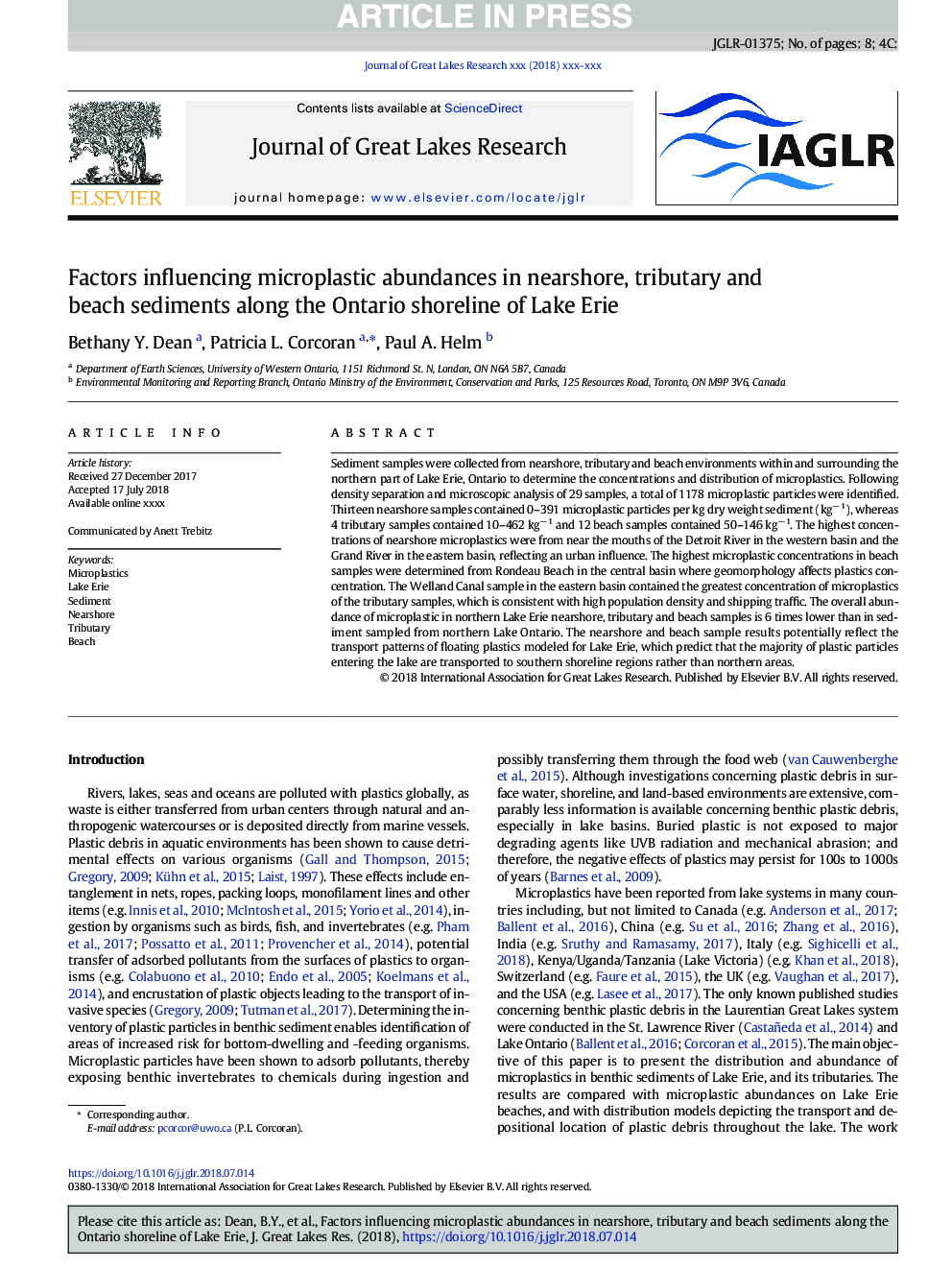| Article ID | Journal | Published Year | Pages | File Type |
|---|---|---|---|---|
| 11010247 | Journal of Great Lakes Research | 2018 | 8 Pages |
Abstract
Sediment samples were collected from nearshore, tributary and beach environments within and surrounding the northern part of Lake Erie, Ontario to determine the concentrations and distribution of microplastics. Following density separation and microscopic analysis of 29 samples, a total of 1178 microplastic particles were identified. Thirteen nearshore samples contained 0-391 microplastic particles per kg dry weight sediment (kgâ1), whereas 4 tributary samples contained 10-462â¯kgâ1 and 12 beach samples contained 50-146â¯kgâ1. The highest concentrations of nearshore microplastics were from near the mouths of the Detroit River in the western basin and the Grand River in the eastern basin, reflecting an urban influence. The highest microplastic concentrations in beach samples were determined from Rondeau Beach in the central basin where geomorphology affects plastics concentration. The Welland Canal sample in the eastern basin contained the greatest concentration of microplastics of the tributary samples, which is consistent with high population density and shipping traffic. The overall abundance of microplastic in northern Lake Erie nearshore, tributary and beach samples is 6 times lower than in sediment sampled from northern Lake Ontario. The nearshore and beach sample results potentially reflect the transport patterns of floating plastics modeled for Lake Erie, which predict that the majority of plastic particles entering the lake are transported to southern shoreline regions rather than northern areas.
Related Topics
Physical Sciences and Engineering
Earth and Planetary Sciences
Earth and Planetary Sciences (General)
Authors
Bethany Y. Dean, Patricia L. Corcoran, Paul A. Helm,
